
DOC023.98.80088
Chlorine Sensor
02/2018, Edition 9
User Manual
Bedienungsanleitung
Manuale utente
Manuel de l’utilisateur
Manual del usuario
Manual do utilizador
Návod k použití
Brugervejledning
Gebruikershandleiding
Instrukcja obsługi
Bruksanvisning
Ръководство за потребителя
Felhasználói kézikönyv
Manual de utilizare
Руководство пользователя
Kullanıcı Kılavuzu
Návod na použitie
Navodila za uporabo
Korisnički priručnik
Εγχειρίδιο χρήσης

English...................................................................................................................................................................................................3
Deutsch...............................................................................................................................................................................................23
Italiano................................................................................................................................................................................................. 46
Français.............................................................................................................................................................................................. 68
Español............................................................................................................................................................................................... 90
Português........................................................................................................................................................................................ 112
Čeština.............................................................................................................................................................................................. 134
Dansk.................................................................................................................................................................................................155
Nederlands...................................................................................................................................................................................... 176
Polski................................................................................................................................................................................................. 198
Svenska............................................................................................................................................................................................ 220
български....................................................................................................................................................................................... 241
Magyar.............................................................................................................................................................................................. 265
Română............................................................................................................................................................................................ 286
Русский............................................................................................................................................................................................ 308
Türkçe................................................................................................................................................................................................332
Slovenský jazyk............................................................................................................................................................................ 353
Slovenski.......................................................................................................................................................................................... 374
Hrvatski............................................................................................................................................................................................. 395
Ελληνικά........................................................................................................................................................................................... 416
2

Table of contents
Specifications on page 3 Maintenance on page 16
General information on page 4 Troubleshooting on page 20
Installation on page 6 Replacement parts on page 22
Operation on page 10
Specifications
Specifications are subject to change without notice.
Specification Details
Measurement range 0 to 20 ppm
1
Lower limit of detection 30 ppb (0.030 ppm)
Resolution 0.001 ppm (1 ppb)
pH operating range 4 to 9 pH units
Accuracy
(chlorine concentrations
within ±2 ppm or 20%
(whichever is smaller) of the
calibrated point)
Free chlorine (0 to 10 ppm):
• ± 3% of the reference test
2
(DPD) at constant
pH less than 7.2 (±0.2 pH unit)
• ± 10% of the reference test
2
(DPD) at stable
pH less than 8.5 (±0.5 pH unit from the pH at
chlorine calibration)
Total chlorine (0 to 10 ppm):
• ± 10% of the reference test
2
(DPD) at stable
pH less than 8.5 (±0.5 pH unit from the pH at
chlorine calibration)
• ± 20% of the reference test
2
(DPD) at pH
greater than 8.5
Specification Details
Repeatability 30 ppb or 3%, whichever is greater
Response time Free chlorine: 140 seconds for 90% change (T
90
)
at a stable temperature and pH
Total chlorine: 100 seconds for 90% change (T
90
)
at a stable temperature and pH
Sampling time Continuous
Interferences Free chlorine: Monochloramine, chlorine dioxide,
ozone and chalk deposits
Total chlorine: Chlorine dioxide, ozone and chalk
deposits
Pressure limit 0.5 bar, no pressure impulses and/or vibrations
Flow rate 30 to 50 L/hour (7.9 to 13.2 gal/hour)
40 L/hour (10.5 gal/hour) – optimal
Power requirements 12 VDC, 30 mA maximum (supplied by controller)
Operating temperature 5 to 45 °C (41 to 113 °F)
Storage temperature Sensor: 0 to 50 °C (32 to 122 °F) dry without
electrolyte
Electrolyte: 15 to 25 °C (59 to 77 °F)
Dimensions
(length/diameter)
195 mm (7.68 in.)/25 mm (0.98 in.)
Cable length/type 1 m
Cable connection 5 pin, M12 connector
Measurement method Reagentless, electrochemical, amperometric,
three-electrode system
Calibration methods 1-point or 2-point (zero and slope) calibration
Temperature compensation Internal temperature sensor
1
The chlorine sensors are not applicable for applications with consistently low (< 0.1 ppm) or zero chlorine concentrations.
2
The test must be conducted at the analyzer sampling point.
English 3

Specification Details
Material Corrosion-resistant materials (stainless steel,
PVC, silicon rubber and polycarbonate)
Warranty 1 year warranty on the electrode body, includes
the electronics (EU: 2 years)
General information
In no event will the manufacturer be liable for direct, indirect, special,
incidental or consequential damages resulting from any defect or
omission in this manual. The manufacturer reserves the right to make
changes in this manual and the products it describes at any time, without
notice or obligation. Revised editions are found on the manufacturer’s
website.
Safety information
N O T I C E
The manufacturer is not responsible for any damages due to misapplication or
misuse of this product including, without limitation, direct, incidental and
consequential damages, and disclaims such damages to the full extent permitted
under applicable law. The user is solely responsible to identify critical application
risks and install appropriate mechanisms to protect processes during a possible
equipment malfunction.
Please read this entire manual before unpacking, setting up or operating
this equipment. Pay attention to all danger and caution statements.
Failure to do so could result in serious injury to the operator or damage
to the equipment.
Make sure that the protection provided by this equipment is not impaired.
Do not use or install this equipment in any manner other than that
specified in this manual.
Use of hazard information
D A N G E R
Indicates a potentially or imminently hazardous situation which, if not avoided, will
result in death or serious injury.
W A R N I N G
Indicates a potentially or imminently hazardous situation which, if not avoided,
could result in death or serious injury.
C A U T I O N
Indicates a potentially hazardous situation that may result in minor or moderate
injury.
N O T I C E
Indicates a situation which, if not avoided, may cause damage to the instrument.
Information that requires special emphasis.
Precautionary labels
Read all labels and tags attached to the instrument. Personal injury or
damage to the instrument could occur if not observed. A symbol on the
instrument is referenced in the manual with a precautionary statement.
This is the safety alert symbol. Obey all safety messages that follow
this symbol to avoid potential injury. If on the instrument, refer to the
instruction manual for operation or safety information.
This symbol indicates that a risk of electrical shock and/or
electrocution exists.
This symbol indicates the presence of devices sensitive to Electro-
static Discharge (ESD) and indicates that care must be taken to
prevent damage with the equipment.
Electrical equipment marked with this symbol may not be disposed of
in European domestic or public disposal systems. Return old or end-
of-life equipment to the manufacturer for disposal at no charge to the
user.
Product overview
The free chlorine sensor and total chlorine sensor are reagentless,
electrochemical sensors that continuously measure the chlorine
4
English

concentration in water. The free chlorine sensor measures the
concentration of free chlorine (generated from inorganic chlorine
products) in water. The total chlorine sensor measures the concentration
of total chlorine (free chlorine and combined chlorine) in water.
Variations in the pH value have an affect on the accuracy of the chlorine
measurement. The chlorine value shown on the controller usually
decreases at about 10% per pH unit increase.
This sensor has an internal temperature sensor that increases the
accuracy of chlorine measurement. The temperature measurement
signal is used internally by the sensor for automatic temperature
compensation. The temperature measurement signalis not shown on the
controller.
This sensor is designed to work with the digital gateway for the CLF10sc
and CLT10sc Reagentless Chlorine Analyzer and one of the sc series
controllers for data collection and operation.
Figure 1 shows the free chlorine sensor and total chlorine sensor.
Figure 1 Sensor overview
1 Electrode of the free chlorine
sensor
4 Vent hole in membrane cap
2 Membrane cap 5 Rubber band
3 Membrane 6 Electrode of the total chlorine
sensor
Sensor LEDs
The green LED and orange LED located inside the transparent area of
the chlorine sensor indicate the conditions of the power supply, sensor
signal polarity and electrochemical cell.
English
5

LED color Condition Description
Green On (steady) The processor is working correctly.
Off or On
(flashing)
The voltage is too low which has caused a
malfunction of the processor.
Orange Off The sensor is working correctly.
On (steady) The internal signal from the working electrode
has the wrong polarity.
If the LED is on for longer than 30 minutes, do
sensor maintenance.
On (flashing) The level of chlorine concentration is too high.
Reduce the chlorine concentration.
Theory of operation
This sensor is a potentiostatic three-electrode instrument, with a
specially placed counter electrode. The measuring (working) electrode is
membrane covered and is in the electrolyte together with the reference
electrode. This electrode area contains a special electrolyte and is
separated from the measured sample by the membrane.
The sensor uses an amperometric method to measure chlorine
concentration in water. Chlorine species in the measured sample pass
through the membrane and react with the working electrode. This
reaction produces an electrical current proportional to the chlorine
concentration. The electrical signal is amplified by the sensor electronics
and is transmitted to the instrument in voltage format (mV). The third
electrode (auxiliary or counter electrode) is put in the measured sample
and is used to maintain a constant working potential on the working
electrode. The working potential is controlled by the reference electrode.
This configuration increases measurement stability.
The highly-buffered electrolyte inside the membrane cap supplies
internal compensation for pH fluctuations in the measured sample. The
buffer helps to immediately change hypochlorite ions permeating the
membrane into hypochlorous acid molecules. The electrolyte makes the
measurement almost independent of the pH of the measured sample.
The chlorine readings are independent from the temperature of the
measured water due to internal temperature compensation.
Product components
Refer to Figure 2 to make sure that all components have been received.
If any of these items are missing or damaged, contact the manufacturer
or a sales representative immediately.
Figure 2 Sensor components
1 Chlorine sensor 4 Split ring
2 Special abrasive paper 5 Electrolyte
3 Split ring O-ring
Installation
C A U T I O N
Multiple hazards. Only qualified personnel must conduct the tasks
described in this section of the document.
6 English

Sensor assembly
C A U T I O N
The electrolyte contains potassium halide and buffer to adjust acidity. Read the
MSDS sheet before opening the electrolyte bottle.
The sensor must be assembled before it can be installed in the chlorine
flow cell. Assembly consists of removing the membrane cap, filling the
membrane cap with electrolyte and putting the membrane cap on to the
electrode shaft.
Before assembling the sensor, read these precautions:
• Do not touch the electrodes and keep the electrodes clean. Do not
remove the layer on the electrodes.
• Lift up the rubber band that covers the vent hole marked “M48” on the
membrane cap before removing the membrane cap. The vent allows
air to come into the membrane cap. The membrane will be destroyed
if the vent is covered when the membrane cap is removed, because
vacuum will build up in the membrane cap.
• Do not remove the metallic membrane holder from the cap as this will
damage the membrane.
• Always put the membrane cap on a clean, non-absorbent surface.
• Do not shake the electrolyte bottle as shaking the bottle creates
bubbles. After the electrolyte bottle is opened, store the bottle up side
down.
• Make sure that there are as few bubbles in the electrolyte as possible
when filling the membrane cap with electrolyte. Too many bubbles will
decrease sensor performance.
• Do not close the vent hole marked "M48" in the membrane cap with
your finger when the membrane cap is put on to prevent excess
electrolyte from escaping through the vent. The membrane will be
damaged if the excess electrolyte can not escape. Gently clean off
any electrolyte on the outside of the sensor with a clean, dry cloth or
paper. Make sure not to touch the membrane.
• Make sure the membrane cap is completely put on up to the stop. The
first resistance comes from the O-ring seal, but continue to put on the
cap until the cap hits the electrode shaft.
Assemble the chlorine sensor
English 7

8 English

Install the sensor
The sensor must be installed in the flow cell, connected to the gateway,
conditioned and then calibrated before initial use and after maintenance
is done on the sensor. To install and connect the sensor, refer to the
illustrated steps.
To condition the sensor, operate the sensor for 6 to 12 hours until the
sensor readings stabilize. Refer to Diagnostic and test menu
on page 20 for information about viewing sensor readings.
Note: The controller and the sensor connected to it must remain in operation
continuously to maintain calibration.
English 9

Operation
Guidelines for operation
• This sensor is most reliable at residual chlorine concentrations more
than 0.1 ppm (mg/L). A build-up of sediments/contaminates (e.g.,
biological) on the membrane can interfere or prevent later chlorine
measurements.
• This sensor must not be operated in chlorine free water for more than
one day.
• This sensor must not be exposed to pressure impulses and/or
vibrations from the sample water.
User navigation
Refer to the controller documentation for keypad description and
navigation information.
Configure the sensor
Use the Configure menu to enter identification information and display
options for the sensor and to change options for data handling and
storage.
1. Push the MENU key and select Sensor Setup, Configure.
Option Description
EDIT NAME Changes the name that corresponds to the sensor on the
top of the measure screen. The name is limited to
10 characters in any combination of letters, numbers,
spaces or punctuation. The default name is the serial
number of the sensor.
10 English

Option Description
SELECT
PARAM.
Customizes the options for sensor data handling and
storage. Refer to Select the parameters on page 11.
RESET
DEFAULTS
Sets the configuration menu to the default settings. All
sensor information is lost.
Select the parameters
1. Select the type of chlorine sensor used - Total CL2 or Free CL2.
2. Select whether a pH sensor is used - Yes or No.
3. If Yes, select the type of pH sensor used - DIFF PH (pHD) or
COMBO pH (pH combination) and then Chlorine.
4. Customize the sensor parameters:
Option Description
SELECT
UNITS
Sets the units for the sensor measurements-Auto ppb-ppm,
Auto ug/L-mg/L, Fixed ppm or Fixed mg/L.
DISPLAY
FORMAT
Sets the number of decimal places that are shown on the
measure screen-X.XXX, XX.XX (default), XXX.X or XXXX
(Auto).
SELECT
RANGE
Sets the measurement range-0 to 10 ppm.
CAL WATCH Shown if pH sensor is used-refer to Select the Cal Watch
alarm values on page 11.
FILTER Sets a time constant to increase signal stability. The time
constant calculates the average value during a specified
time-0 (filtering disabled) to 60 seconds (average of signal
value for 60 seconds). The filter increases the time for the
sensor signal to respond to changes in the process.
LOG SETUP Sets the time interval for event and data logging for
chlorine concentration and flow status-10, 30 seconds, 1,5,
15 (default), 60 minutes.
Select the Cal Watch alarm values
The Cal Watch menu is used to:
• Set the error and warning alarm conditions for chlorine and/or pH
measurement deviations.
• Set the amount of time a chlorine and/or pH measurement can be
outside the deviation range before an alarm occurs.
• Set the amount of time a chlorine measurement can be 0.5 ppm or
higher before an alarm occurs if the previous chlorine sensor
calibration was done using a process flow with a low chlorine
concentration (LCC) (< 0.5 ppm).
• Set the amount of time a Cal Watch alarm is on before it is canceled
by the instrument if measurements go back in to range.
• Set the percentage rate at which measurements must be outside the
deviation range before an alarm occurs and must be back in range
before an alarm is canceled by the instrument.
To select Cal Watch alarm values:
1. Select Cal Monitor.
2. If the passcode is enabled in the security menu for the controller,
enter the passcode.
3. Select the measurement(s) to monitor (choose one):
Option Description
ALL Enables an error or warning alarm to activate when chlorine
and/or pH measurement deviations occur that are equal to or
higher than the chlorine and pH deviation values selected by
the user.
CL2 ONLY Enables an error or warning alarm to activate when a chlorine
measurement deviation occurs that is equal to or higher than
the chlorine measurement deviation values selected by the
user.
pH ONLY Enables an error or warning alarm to activate when a pH
measurement deviation occurs that is equal to or higher than
the pH measurement deviation values selected by the user.
None Disables all Cal Watch alarms.
English 11

4. Push the ENTER key and select Activate TMR.
5. Set the amount of time a measurement(s) can be outside the
deviation range before an alarm occurs:
Option Description
ALL ACTIVATE TMR: Sets the amount of time the chlorine AND pH
measurements can be out of range before an alarm occurs-10 to
99 minutes (10 minutes default).
CONFID LEVEL: Set the percentage rate at which chlorine AND
pH measurements must be out of range before an alarm occurs
and must be in range before an alarm is automatically canceled
by the instrument-50 to 95% (default).
CL2/pH
ONLY
ACTIVATE TMR: Sets the amount of time the chlorine OR pH
measurements can be out of range before an alarm occurs-10 to
999 minutes (30 minutes default).
CONFID LEVEL: Set the percentage rate at which chlorine OR
pH measurements must be out of range before an alarm occurs
and must be in range before an alarm is automatically canceled
by the instrument-50 to 95% (default).
LCC ACTIVATE TMR: Set the amount of time a chlorine measurement
can be 0.5 ppm or higher before an alarm occurs-10 to
999 minutes (30 minutes default). An alarm only occurs if the
previous chlorine sensor calibration was done using a process
flow with a low chlorine concentration (LCC) (< 0.5 ppm).
CONFID LEVEL: Set the percentage rate at which chlorine
measurements must be 0.5 ppm or higher before an alarm
occurs and must be less than 0.5 ppm before an alarm is
automatically canceled by the instrument-50 to 95% (default).
6. Push the ENTER key and select Deactivate TMR.
7. Set the amount of time an alarm is on before it is automatically
canceled (deactivated) by the instrument if the measurements go
back in to range at the percentage rate (confidence level) selected in
Activate TMR:
Option Description
ALL Sets the amount of time a chlorine AND pH measurement
deviation alarm is on before it is canceled-10 to 99 minutes
(30 minutes default).
Option Description
CL2/pH
ONLY
Sets the amount of time a chlorine OR pH measurement
deviation alarm is on before it is canceled-10 to 999 minutes
(30 minutes default).
LCC Sets the amount of time an LCC alarm is on before it is
canceled-10 to 999 minutes (30 minutes default).
8. Push the ENTER key and select CL2 Deviation.
9. Set the chlorine measurement deviation values that activate alarms:
Option Description
CL2 ERR DEV Set the chlorine measurement deviation that will activate an
error alarm-30 to 99% (50% default).
CL2 WRN DEV Set the chlorine measurement deviation that will activate a
warning alarm-10 to 30% (20% default).
Note: Chlorine deviation is measured by the instrument using the chlorine
value recorded during the last process concentration calibration for chlorine.
10. Push the ENTER key and select pH Deviation.
11. Set the pH measurement deviation values that activate alarms:
Option Description
pH ERR DEV Set the pH measurement deviation that will activate an error
alarm-1 (default) to 3 pH units.
pH WRN DEV Set the pH measurement deviation that will activate a
warning alarm-0.5 (default) to 1 pH unit.
Note: pH deviation is measured by the instrument using the pH value recorded
during the last process concentration calibration for chlorine.
Calibrate the sensor
About sensor calibration
The sensor characteristics slowly shift over time and cause the sensor to
lose accuracy. The sensor must be calibrated regularly to maintain
accuracy. The calibration frequency varies with the application and is
best determined by experience.
12
English

Recalibrate the sensor whenever disconnected from power and removed
from water for more than 15 minutes.
Choosing the calibration method
An initial 2-point calibration, including both zero
3
and slope
(process concentration) measurements, must be done for new or
refurbished sensors.
One or two measurements are required for sensor calibration.
Measurements are made with the chlorine sensor in the flow cell.
When only one measurement is made (1-point calibration), a zero
calibration or a process concentration measurement (grab sample
analysis) is done. A zero calibration can be done chemically by
measuring water with no chlorine or electrically by electronically
removing the calibration offset produced by the gateway
3
. A process
concentration measurement is done chemically by measuring the
chlorine concentration of the process flow with a reference method (grab
sample analysis) and then entering the measured value through the
controller.
When two measurements are made (2-point calibration), the first data
point measured is the zero-point and is determined by doing a zero
calibration either electrically or chemically using the same method as the
1-point calibration
3
. The second data point measured is the process
concentration and is determined by doing a process concentration
measurement (grab sample analysis) using the same method as the 1-
point calibration.
Note: When a chemical zero calibration is done, the instrument automatically does
an electrical zero calibration before the chemical zero calibration and shows both
offsets in the calibration results.
1-point calibration procedure
1. Push the MENU key and select Sensor Setup, Calibrate, Chlorine.
2. Select 1 Point Sample.
3. If the passcode is enabled in the security menu for the controller,
enter the passcode.
4. Select either Zero Cal (zero calibration) or Process Conc (process
concentration calibration).
5. Select the option for the output signal during calibration:
Option Description
ACTIVE The instrument sends the current measured output value
during the calibration procedure.
HOLD The sensor output value is held at the current measured value
during the calibration procedure.
TRANSFER A preset output value is sent during calibration. Refer to the
controller user manual to change the preset value.
6. If Process Conc was selected:
a. Push ENTER.
The measured value is shown.
b. Wait for the value to stabilize and push ENTER
4
to enter a
process flow measurement.
c. Measure the chlorine concentration of the process flow (grab
sample analysis) with an instrument using a reference method
(e.g., DPD). Use the arrow keys to enter the measured value and
push ENTER.
7. If Zero Cal was selected, select the type of calibration:
Option Description
ELECTRICAL The offset produced by the gateway is removed to set the
zero-point (no sample used).
CHEMICAL Water with no chlorine is measured to set the zero-point.
8. If Electrical was selected, wait for the value to stabilize and push
ENTER
4
to set the zero-point electrically.
3
An electrical zero calibration is recommended. A chemical zero calibration is only recommended if the process flow chlorine concentrations is
routinely lower than 0.5 ppm.
4
If the option for Auto Stab (auto stabilization) is set to Yes in the Calibration Options menu, the screen will advance to the next step automatically.
Refer to Change the calibration options on page 15.
English 13

9. If Chemical was selected:
a. Turn off the process flow and put water with no chlorine through
the flow cell. Make sure the temperature of the water with no
chlorine is as close as possible to the process sample flow
temperature.
b. Push ENTER.
The measured value is shown.
c. Wait for the value to stabilize and push ENTER
4
to set the zero-
point chemically.
10. Review the calibration result:
• Passed—the sensor is calibrated and ready to measure samples.
The slope and/or offset values are shown.
• Failed—the calibration slope or offset is outside of accepted limits.
Do sensor maintenance (refer to Maintenance on page 16) and
then repeat the calibration.
11. If the calibration passed, push ENTER to continue.
12. If the option for operator ID is set to Yes in the Calibration Options
menu, enter an operator ID. Refer to Change the calibration options
on page 15.
13. On the New Sensor screen, select whether the sensor is new:
Option Description
YES The sensor was not calibrated previously with this instrument. The
days of operation and previous calibration curves for the sensor are
reset.
NO The sensor was calibrated previously with this instrument.
14. Return the sensor to the process and push ENTER.
The output signal returns to the active state and the measured
sample value is shown on the measure screen.
Note: If the output mode is set to hold or transfer, select the delay time when
the outputs return to the active state.
2-point calibration procedure
1. Push the MENU key and select Sensor Setup, Calibrate, Chlorine.
2. Select 2 Point Sample.
3. If the passcode is enabled in the security menu for the controller,
enter the passcode.
4. Select the option for the output signal during calibration:
Option Description
ACTIVE The instrument sends the current measured output value
during the calibration procedure.
HOLD The sensor output value is held at the current measured value
during the calibration procedure.
TRANSFER A preset output value is sent during calibration. Refer to the
controller user manual to change the preset value.
5. Select the type of calibration:
Option Description
ELECTRICAL The offset produced by the gateway is removed to set the
zero-point (no sample used). Then a process sample is
measured to set the second point from which the slope is
calculated.
CHEMICAL Water with no chlorine is measured to set the zero-point.
Then a process sample is measured to set the second point
from which the slope is calculated.
6. If Electrical was selected:
a. Wait for the value to stabilize and push ENTER
5
to set the zero-
point electrically.
b. Push ENTER to continue the calibration.
The measured value of the process concentration is shown.
c. Wait for the value to stabilize and push ENTER
5
to enter a
process flow measurement.
5
If the option for Auto Stab (auto stabilization) is set to Yes in the Calibration Options menu, the screen will advance to the next step automatically.
Refer to Change the calibration options on page 15.
14 English

7. If Chemical was selected:
a. Turn off the process flow and put water with no chlorine through
the flow cell. Make sure the temperature of the water with no
chlorine is as close as possible to the process sample flow
temperature.
b. Push ENTER.
The measured value is shown.
c. Wait for the value to stabilize and push ENTER
5
to set the zero-
point chemically.
d. Turn off the flow of water with no chlorine and turn on the process
flow.
e. Push ENTER.
The measured value is shown.
f. Wait for the value to stabilize and push ENTER
5
to enter a
process flow measurement.
8. Measure the chlorine concentration of the process flow (grab sample
analysis) with an instrument using a reference method (e.g., DPD).
Use the arrow keys to enter the measured value and push ENTER.
9. Review the calibration result:
• Passed—the sensor is calibrated and ready to measure samples.
The slope and/or offset values are shown.
• Failed—the calibration slope or offset is outside of accepted limits.
Do sensor maintenance (refer to Maintenance on page 16) and
then repeat the calibration.
10. If the calibration passed, push ENTER to continue.
11. If the option for operator ID is set to Yes in the Calibration Options
menu, enter an operator ID. Refer to Change the calibration options
on page 15.
12. On the New Sensor screen, select whether the sensor is new:
Option Description
YES The sensor was not calibrated previously with this instrument. The
days of operation and previous calibration curves for the sensor are
reset.
NO The sensor was calibrated previously with this instrument.
13. Return the sensor to the process and push ENTER.
The output signal returns to the active state and the measured
sample value is shown on the measure screen.
Note: If the output mode is set to hold or transfer, select the delay time when
the outputs return to the active state.
Reset calibration to defaults
To remove a bad calibration, replace the user calibration settings with
the default calibration settings using the Calibrate menu. Then
recalibrate the sensor when needed.
1. Push the MENU key and select Sensor Setup, Calibrate, [Select
Sensor], Reset Defaults.
2. If the passcode is enabled in the security menu for the controller,
enter the passcode.
3. Select Yes and push Enter.
Change the calibration options
The user can set a calibration reminder, enable auto stabilization during
calibrations or include an operator ID with calibration data from the Cal
Options menu.
1. Push the MENU key and select Sensor Setup, Calibrate, [Select
Sensor], Cal Options.
2. Customize the options:
Option Description
AUTO STAB Enables the system to accept measurement signal values
during calibrations and advance to the next step of the
calibration when the system determines the measurement
signal has stabilized-On or Off (default). Enter a
stabilization range-25 to 75 ppb (0.025 to 0.075 ppm).
CAL REMINDER Sets a reminder for the next calibration in days, months or
years.
OP ID ON CAL Includes an operator ID with calibration data—Yes or No
(default). The ID is entered during the calibration.
English 15

Data log
The controller provides one data log for each sensor. The data log stores
the measurement data at selected intervals (user configurable). The data
log can be read out in a CSV format. For instructions on downloading the
logs, please refer to the controller user manual.
Refer to Select the parameters on page 11 for information about setting
time intervals for data storage in the data log.
Modbus registers
A list of Modbus registers is available for network communication. Refer
to the manufacturer's website for more information.
Maintenance
W A R N I N G
Multiple hazards. Do not disassemble the instrument for maintenance.
If the internal components must be cleaned or repaired, contact the
manufacturer.
C A U T I O N
Multiple hazards. Only qualified personnel must conduct the tasks
described in this section of the document.
Maintenance schedule
Maintenance task Frequency
Polish the electrode When sensor readings are unstable or
the slope is too low
Replace the membrane cap
6
1 year
(The cap may need to be replaced
more often depending on water
quality.)
Maintenance task Frequency
Replace the electrolyte 3 to 6 months
Replace the sensor 3 years
(The sensor may need to be replaced
more often depending on water quality
and application.)
Remove the sensor from the flow cell
Note: The sensor can be removed from water for up to 1 hour to do maintenance
on the sensor. The membrane cap and electrolyte will need to be replaced after
1 hour.
6
The electrolyte is replaced when the membrane cap is replaced.
16 English

English 17

Polish the electrode tip
Polish the flat tip of the electrode with the special abrasive paper
provided.
Note: If calibration is impossible due to unstable sensor readings or too low
calibration slope, replace the electrolyte and membrane cap. Only polish the
electrode tip if replacing the electrolyte and membrane cap do not correct the
problem.
1. Disconnect the cable from the sensor.
2. Remove the sensor from the flow cell.
3. Read the precautions in Sensor assembly on page 7.
4. Lift up the rubber band that covers the vent hole marked “M48” on
the membrane cap and slide the rubber band over so it does not
cover the vent hole.
5. Turn the membrane cap counter-clockwise and remove the
membrane cap from the sensor.
6. Clean the electrode with a clean, dry paper towel.
7. Polish the dry electrode tip (Figure 3). Hold one corner of the special
abrasive paper while doing procedure.
Note: No additional force should be applied downward other than the sensor
weight.
8. Assemble the sensor with the old membrane cap.
9. Install the sensor in the flow cell and connect the sensor cable.
10. Condition the sensor by operating it for 6 to 12 hours. The sensor is
conditioned when the sensor readings stabilize. Refer to Diagnostic
and test menu on page 20 for information about viewing sensor
readings.
11. Calibrate the sensor.
Figure 3 Polish the electrode with the special abrasive
paper
1 Dry, clean paper towel 3 Special abrasive paper
2 Free chlorine sensor 4 Total chlorine sensor
Replace the membrane cap
1. Disconnect the cable from the sensor.
2. Remove the sensor from the flow cell.
3. Read the precautions in Sensor assembly on page 7.
4. Turn the membrane cap counter-clockwise and remove the
membrane cap from the sensor.
5. Dispose of the old membrane cap.
18
English

6. Assemble the sensor with a new membrane cap.
7. Install the sensor in the flow cell and connect the sensor cable.
8. Condition the sensor by operating it for 6 to 12 hours. The sensor is
conditioned when the sensor readings stabilize. Refer to Diagnostic
and test menu on page 20 for information about viewing sensor
readings.
9. Calibrate the sensor.
Replace the electrolyte
1. Disconnect the cable from the sensor.
2. Remove the sensor from the flow cell.
3. Read the precautions in Sensor assembly on page 7.
4. Lift up the rubber band that covers the vent hole marked “M48” on
the membrane cap and slide the rubber band over so it does not
cover the vent hole.
5. Turn the membrane cap counter-clockwise and remove the
membrane cap from the sensor.
6. Hold the membrane cap with the electrolyte on the bottom and shake
up and down 1-2 times to remove old electrolyte.
7. Assemble the sensor with the membrane cap.
8. Install the sensor in the flow cell and connect the sensor cable.
9. Condition the sensor by operating it until the sensor readings
stabilize. Refer to Diagnostic and test menu on page 20 for
information about viewing sensor readings.
10. Calibrate the sensor.
Prepare the sensor for storage
C A U T I O N
The electrolyte contains potassium halide and buffer to adjust acidity. Read the
MSDS sheet before opening the electrolyte bottle.
The sensor can be stored for up to 3 years from the date of manufacture
when prepared as described. Refer to Specifications on page 3 for
storage specifications.
Note: Do not touch the electrodes and keep the electrodes clean. Do not remove
the layer on the electrodes.
1. Turn the membrane cap counter-clockwise and remove the
membrane cap from the sensor.
2. Rinse the membrane cap and electrode in clean water.
3. Dry the membrane cap and electrode with a clean, dry paper towel in
a place free of dust.
4. Loosely put the membrane cap on to the electrode shaft to protect
the electrode. The membrane must not rest against the measuring
electrode.
Remove the sensor from storage
Pre-requisite: Obtain a new membrane cap. The old membrane cap
cannot be used again.
1. Read the precautions in Sensor assembly on page 7.
2. Turn the membrane cap counter-clockwise and remove the
membrane cap from the sensor.
3. Dispose of the old membrane cap.
4. Polish the electrode tip with the special abrasive paper.
5. Assemble the sensor with a new membrane cap.
6. Install the sensor in the flow cell and connect the sensor cable.
7. Condition the sensor by operating it for 6 to 12 hours. The sensor is
conditioned when the sensor readings stabilize. Refer to Diagnostic
and test menu on page 20 for information about viewing sensor
readings.
8. Calibrate the sensor.
English
19

Troubleshooting
Diagnostic and test menu
The diagnostic and test menu shows current and historical information
about the chlorine analyzer. Refer to Table 1. To access the diagnostic
and test menu, push the MENU key and select Sensor Setup, Diag/Test.
Table 1 DIAG/TEST menu
Option Description
GATEWAY INFO Shows the firmware version, driver version, serial number
and boot version for the controller and the types of
sensors connected to the controller.
CAL DAYS Shows the number of days since the sensor was last
calibrated.
CAL HISTORY Shows a list of the times when the sensor was calibrated.
Push ENTER to scroll through the entries and view a
summary of the calibration data.
RST CAL HISTORY Resets the sensor calibration history. Requires passcode.
SIGNALS Shows the sensor measurement signal value in mV.
SENSOR DAYS Shows the number of days the sensor has been in
operation.
RST SENSORS Resets the sensor days and calibration days to default.
Requires passcode.
CALIBRATION Shows the slope and offset values for chlorine and pH (if
pH sensor is used). Shows the offset value for the
temperature (if pH sensor is used).
Error list
Errors may occur for various reasons. The sensor reading on the
measurement screen flashes. All outputs are held when specified in the
controller menu. To show the sensor errors, push the MENU key and
select Sensor Diag, Error List. A list of possible errors is shown below.
Table 2 Error list for the sensor
Error Description Resolution
CL CAL
REQD
A chlorine calibration and/or pH
calibration is required.
The chlorine and/or pH
measurement has changed
enough to cause a Cal Watch
alarm to occur. Refer to the
chlorine sensor manual for
more information.
Calibrate the chlorine sensor
and/or pH sensor.
CL MAINT
REQD
Chlorine sensor maintenance is
required.
The slope is less than 30% or
more than 300% of the default.
The default slope is
100 mV/ppm (100%).
Do sensor maintenance and then
repeat the calibration, or replace
the sensor. Refer to the chlorine
sensor manual for more
information.
CL MAINT
REQD
Chlorine sensor maintenance is
required.
The offset is too high (more
than ±50 mV).
Do sensor maintenance and then
repeat the calibration, or replace
the sensor. Refer to the chlorine
sensor manual for more
information.
CONC
TOO LOW
The chlorine signal is > 0 mV.
The potential delivered by the
sensor is outside of the range
0 to -2500 mV.
A connection error occurred or
the chlorine sensor is not
polarized/equilibrated in the
sample sufficiently.
CONC
TOO HIGH
The chlorine signal is less than
-2500 mV or greater than
2500 mV (by absolute value).
Warning list
A warning does not affect the operation of menus, relays and outputs. A
warning icon flashes and a message is shown on the bottom of the
measurement screen. To show the sensor warnings, push the MENU
20
English
Sidan laddas...
Sidan laddas...
Sidan laddas...
Sidan laddas...
Sidan laddas...
Sidan laddas...
Sidan laddas...
Sidan laddas...
Sidan laddas...
Sidan laddas...
Sidan laddas...
Sidan laddas...
Sidan laddas...
Sidan laddas...
Sidan laddas...
Sidan laddas...
Sidan laddas...
Sidan laddas...
Sidan laddas...
Sidan laddas...
Sidan laddas...
Sidan laddas...
Sidan laddas...
Sidan laddas...
Sidan laddas...
Sidan laddas...
Sidan laddas...
Sidan laddas...
Sidan laddas...
Sidan laddas...
Sidan laddas...
Sidan laddas...
Sidan laddas...
Sidan laddas...
Sidan laddas...
Sidan laddas...
Sidan laddas...
Sidan laddas...
Sidan laddas...
Sidan laddas...
Sidan laddas...
Sidan laddas...
Sidan laddas...
Sidan laddas...
Sidan laddas...
Sidan laddas...
Sidan laddas...
Sidan laddas...
Sidan laddas...
Sidan laddas...
Sidan laddas...
Sidan laddas...
Sidan laddas...
Sidan laddas...
Sidan laddas...
Sidan laddas...
Sidan laddas...
Sidan laddas...
Sidan laddas...
Sidan laddas...
Sidan laddas...
Sidan laddas...
Sidan laddas...
Sidan laddas...
Sidan laddas...
Sidan laddas...
Sidan laddas...
Sidan laddas...
Sidan laddas...
Sidan laddas...
Sidan laddas...
Sidan laddas...
Sidan laddas...
Sidan laddas...
Sidan laddas...
Sidan laddas...
Sidan laddas...
Sidan laddas...
Sidan laddas...
Sidan laddas...
Sidan laddas...
Sidan laddas...
Sidan laddas...
Sidan laddas...
Sidan laddas...
Sidan laddas...
Sidan laddas...
Sidan laddas...
Sidan laddas...
Sidan laddas...
Sidan laddas...
Sidan laddas...
Sidan laddas...
Sidan laddas...
Sidan laddas...
Sidan laddas...
Sidan laddas...
Sidan laddas...
Sidan laddas...
Sidan laddas...
Sidan laddas...
Sidan laddas...
Sidan laddas...
Sidan laddas...
Sidan laddas...
Sidan laddas...
Sidan laddas...
Sidan laddas...
Sidan laddas...
Sidan laddas...
Sidan laddas...
Sidan laddas...
Sidan laddas...
Sidan laddas...
Sidan laddas...
Sidan laddas...
Sidan laddas...
Sidan laddas...
Sidan laddas...
Sidan laddas...
Sidan laddas...
Sidan laddas...
Sidan laddas...
Sidan laddas...
Sidan laddas...
Sidan laddas...
Sidan laddas...
Sidan laddas...
Sidan laddas...
Sidan laddas...
Sidan laddas...
Sidan laddas...
Sidan laddas...
Sidan laddas...
Sidan laddas...
Sidan laddas...
Sidan laddas...
Sidan laddas...
Sidan laddas...
Sidan laddas...
Sidan laddas...
Sidan laddas...
Sidan laddas...
Sidan laddas...
Sidan laddas...
Sidan laddas...
Sidan laddas...
Sidan laddas...
Sidan laddas...
Sidan laddas...
Sidan laddas...
Sidan laddas...
Sidan laddas...
Sidan laddas...
Sidan laddas...
Sidan laddas...
Sidan laddas...
Sidan laddas...
Sidan laddas...
Sidan laddas...
Sidan laddas...
Sidan laddas...
Sidan laddas...
Sidan laddas...
Sidan laddas...
Sidan laddas...
Sidan laddas...
Sidan laddas...
Sidan laddas...
Sidan laddas...
Sidan laddas...
Sidan laddas...
Sidan laddas...
Sidan laddas...
Sidan laddas...
Sidan laddas...
Sidan laddas...
Sidan laddas...
Sidan laddas...
Sidan laddas...
Sidan laddas...
Sidan laddas...
Sidan laddas...
Sidan laddas...
Sidan laddas...
Sidan laddas...
Sidan laddas...
Sidan laddas...
Sidan laddas...
Sidan laddas...
Sidan laddas...
Sidan laddas...
Sidan laddas...
Sidan laddas...
Sidan laddas...
Sidan laddas...
Sidan laddas...
Sidan laddas...
Sidan laddas...
Sidan laddas...
Sidan laddas...
Sidan laddas...
Sidan laddas...
Sidan laddas...
Sidan laddas...
Sidan laddas...
Sidan laddas...
Sidan laddas...
Sidan laddas...
Sidan laddas...
Sidan laddas...
Sidan laddas...
Sidan laddas...
Sidan laddas...
Sidan laddas...
Sidan laddas...
Sidan laddas...
Sidan laddas...
Sidan laddas...
Sidan laddas...
Sidan laddas...
Sidan laddas...
Sidan laddas...
Sidan laddas...
Sidan laddas...
Sidan laddas...
Sidan laddas...
Sidan laddas...
Sidan laddas...
Sidan laddas...
Sidan laddas...
Sidan laddas...
Sidan laddas...
Sidan laddas...
Sidan laddas...
Sidan laddas...
Sidan laddas...
Sidan laddas...
Sidan laddas...
Sidan laddas...
Sidan laddas...
Sidan laddas...
Sidan laddas...
Sidan laddas...
Sidan laddas...
Sidan laddas...
Sidan laddas...
Sidan laddas...
Sidan laddas...
Sidan laddas...
Sidan laddas...
Sidan laddas...
Sidan laddas...
Sidan laddas...
Sidan laddas...
Sidan laddas...
Sidan laddas...
Sidan laddas...
Sidan laddas...
Sidan laddas...
Sidan laddas...
Sidan laddas...
Sidan laddas...
Sidan laddas...
Sidan laddas...
Sidan laddas...
Sidan laddas...
Sidan laddas...
Sidan laddas...
Sidan laddas...
Sidan laddas...
Sidan laddas...
Sidan laddas...
Sidan laddas...
Sidan laddas...
Sidan laddas...
Sidan laddas...
Sidan laddas...
Sidan laddas...
Sidan laddas...
Sidan laddas...
Sidan laddas...
Sidan laddas...
Sidan laddas...
Sidan laddas...
Sidan laddas...
Sidan laddas...
Sidan laddas...
Sidan laddas...
Sidan laddas...
Sidan laddas...
Sidan laddas...
Sidan laddas...
Sidan laddas...
Sidan laddas...
Sidan laddas...
Sidan laddas...
Sidan laddas...
Sidan laddas...
Sidan laddas...
Sidan laddas...
Sidan laddas...
Sidan laddas...
Sidan laddas...
Sidan laddas...
Sidan laddas...
Sidan laddas...
Sidan laddas...
Sidan laddas...
Sidan laddas...
Sidan laddas...
Sidan laddas...
Sidan laddas...
Sidan laddas...
Sidan laddas...
Sidan laddas...
Sidan laddas...
Sidan laddas...
Sidan laddas...
Sidan laddas...
Sidan laddas...
Sidan laddas...
Sidan laddas...
Sidan laddas...
Sidan laddas...
Sidan laddas...
Sidan laddas...
Sidan laddas...
Sidan laddas...
Sidan laddas...
Sidan laddas...
Sidan laddas...
Sidan laddas...
Sidan laddas...
Sidan laddas...
Sidan laddas...
Sidan laddas...
Sidan laddas...
Sidan laddas...
Sidan laddas...
Sidan laddas...
Sidan laddas...
Sidan laddas...
Sidan laddas...
Sidan laddas...
Sidan laddas...
Sidan laddas...
Sidan laddas...
Sidan laddas...
Sidan laddas...
Sidan laddas...
Sidan laddas...
Sidan laddas...
Sidan laddas...
Sidan laddas...
Sidan laddas...
Sidan laddas...
Sidan laddas...
Sidan laddas...
Sidan laddas...
Sidan laddas...
Sidan laddas...
Sidan laddas...
Sidan laddas...
Sidan laddas...
Sidan laddas...
Sidan laddas...
Sidan laddas...
Sidan laddas...
Sidan laddas...
Sidan laddas...
Sidan laddas...
Sidan laddas...
Sidan laddas...
Sidan laddas...
Sidan laddas...
Sidan laddas...
Sidan laddas...
Sidan laddas...
Sidan laddas...
Sidan laddas...
Sidan laddas...
Sidan laddas...
Sidan laddas...
Sidan laddas...
Sidan laddas...
Sidan laddas...
Sidan laddas...
Sidan laddas...
Sidan laddas...
Sidan laddas...
Sidan laddas...
Sidan laddas...
Sidan laddas...
Sidan laddas...
Sidan laddas...
Sidan laddas...
Sidan laddas...
Sidan laddas...
Sidan laddas...
Sidan laddas...
Sidan laddas...
Sidan laddas...
Sidan laddas...
Sidan laddas...
Sidan laddas...
Sidan laddas...
Sidan laddas...
Sidan laddas...
Sidan laddas...
Sidan laddas...
Sidan laddas...
Sidan laddas...
Sidan laddas...
Sidan laddas...
Sidan laddas...
Sidan laddas...
Sidan laddas...
Sidan laddas...
Sidan laddas...
Sidan laddas...
Sidan laddas...
-
 1
1
-
 2
2
-
 3
3
-
 4
4
-
 5
5
-
 6
6
-
 7
7
-
 8
8
-
 9
9
-
 10
10
-
 11
11
-
 12
12
-
 13
13
-
 14
14
-
 15
15
-
 16
16
-
 17
17
-
 18
18
-
 19
19
-
 20
20
-
 21
21
-
 22
22
-
 23
23
-
 24
24
-
 25
25
-
 26
26
-
 27
27
-
 28
28
-
 29
29
-
 30
30
-
 31
31
-
 32
32
-
 33
33
-
 34
34
-
 35
35
-
 36
36
-
 37
37
-
 38
38
-
 39
39
-
 40
40
-
 41
41
-
 42
42
-
 43
43
-
 44
44
-
 45
45
-
 46
46
-
 47
47
-
 48
48
-
 49
49
-
 50
50
-
 51
51
-
 52
52
-
 53
53
-
 54
54
-
 55
55
-
 56
56
-
 57
57
-
 58
58
-
 59
59
-
 60
60
-
 61
61
-
 62
62
-
 63
63
-
 64
64
-
 65
65
-
 66
66
-
 67
67
-
 68
68
-
 69
69
-
 70
70
-
 71
71
-
 72
72
-
 73
73
-
 74
74
-
 75
75
-
 76
76
-
 77
77
-
 78
78
-
 79
79
-
 80
80
-
 81
81
-
 82
82
-
 83
83
-
 84
84
-
 85
85
-
 86
86
-
 87
87
-
 88
88
-
 89
89
-
 90
90
-
 91
91
-
 92
92
-
 93
93
-
 94
94
-
 95
95
-
 96
96
-
 97
97
-
 98
98
-
 99
99
-
 100
100
-
 101
101
-
 102
102
-
 103
103
-
 104
104
-
 105
105
-
 106
106
-
 107
107
-
 108
108
-
 109
109
-
 110
110
-
 111
111
-
 112
112
-
 113
113
-
 114
114
-
 115
115
-
 116
116
-
 117
117
-
 118
118
-
 119
119
-
 120
120
-
 121
121
-
 122
122
-
 123
123
-
 124
124
-
 125
125
-
 126
126
-
 127
127
-
 128
128
-
 129
129
-
 130
130
-
 131
131
-
 132
132
-
 133
133
-
 134
134
-
 135
135
-
 136
136
-
 137
137
-
 138
138
-
 139
139
-
 140
140
-
 141
141
-
 142
142
-
 143
143
-
 144
144
-
 145
145
-
 146
146
-
 147
147
-
 148
148
-
 149
149
-
 150
150
-
 151
151
-
 152
152
-
 153
153
-
 154
154
-
 155
155
-
 156
156
-
 157
157
-
 158
158
-
 159
159
-
 160
160
-
 161
161
-
 162
162
-
 163
163
-
 164
164
-
 165
165
-
 166
166
-
 167
167
-
 168
168
-
 169
169
-
 170
170
-
 171
171
-
 172
172
-
 173
173
-
 174
174
-
 175
175
-
 176
176
-
 177
177
-
 178
178
-
 179
179
-
 180
180
-
 181
181
-
 182
182
-
 183
183
-
 184
184
-
 185
185
-
 186
186
-
 187
187
-
 188
188
-
 189
189
-
 190
190
-
 191
191
-
 192
192
-
 193
193
-
 194
194
-
 195
195
-
 196
196
-
 197
197
-
 198
198
-
 199
199
-
 200
200
-
 201
201
-
 202
202
-
 203
203
-
 204
204
-
 205
205
-
 206
206
-
 207
207
-
 208
208
-
 209
209
-
 210
210
-
 211
211
-
 212
212
-
 213
213
-
 214
214
-
 215
215
-
 216
216
-
 217
217
-
 218
218
-
 219
219
-
 220
220
-
 221
221
-
 222
222
-
 223
223
-
 224
224
-
 225
225
-
 226
226
-
 227
227
-
 228
228
-
 229
229
-
 230
230
-
 231
231
-
 232
232
-
 233
233
-
 234
234
-
 235
235
-
 236
236
-
 237
237
-
 238
238
-
 239
239
-
 240
240
-
 241
241
-
 242
242
-
 243
243
-
 244
244
-
 245
245
-
 246
246
-
 247
247
-
 248
248
-
 249
249
-
 250
250
-
 251
251
-
 252
252
-
 253
253
-
 254
254
-
 255
255
-
 256
256
-
 257
257
-
 258
258
-
 259
259
-
 260
260
-
 261
261
-
 262
262
-
 263
263
-
 264
264
-
 265
265
-
 266
266
-
 267
267
-
 268
268
-
 269
269
-
 270
270
-
 271
271
-
 272
272
-
 273
273
-
 274
274
-
 275
275
-
 276
276
-
 277
277
-
 278
278
-
 279
279
-
 280
280
-
 281
281
-
 282
282
-
 283
283
-
 284
284
-
 285
285
-
 286
286
-
 287
287
-
 288
288
-
 289
289
-
 290
290
-
 291
291
-
 292
292
-
 293
293
-
 294
294
-
 295
295
-
 296
296
-
 297
297
-
 298
298
-
 299
299
-
 300
300
-
 301
301
-
 302
302
-
 303
303
-
 304
304
-
 305
305
-
 306
306
-
 307
307
-
 308
308
-
 309
309
-
 310
310
-
 311
311
-
 312
312
-
 313
313
-
 314
314
-
 315
315
-
 316
316
-
 317
317
-
 318
318
-
 319
319
-
 320
320
-
 321
321
-
 322
322
-
 323
323
-
 324
324
-
 325
325
-
 326
326
-
 327
327
-
 328
328
-
 329
329
-
 330
330
-
 331
331
-
 332
332
-
 333
333
-
 334
334
-
 335
335
-
 336
336
-
 337
337
-
 338
338
-
 339
339
-
 340
340
-
 341
341
-
 342
342
-
 343
343
-
 344
344
-
 345
345
-
 346
346
-
 347
347
-
 348
348
-
 349
349
-
 350
350
-
 351
351
-
 352
352
-
 353
353
-
 354
354
-
 355
355
-
 356
356
-
 357
357
-
 358
358
-
 359
359
-
 360
360
-
 361
361
-
 362
362
-
 363
363
-
 364
364
-
 365
365
-
 366
366
-
 367
367
-
 368
368
-
 369
369
-
 370
370
-
 371
371
-
 372
372
-
 373
373
-
 374
374
-
 375
375
-
 376
376
-
 377
377
-
 378
378
-
 379
379
-
 380
380
-
 381
381
-
 382
382
-
 383
383
-
 384
384
-
 385
385
-
 386
386
-
 387
387
-
 388
388
-
 389
389
-
 390
390
-
 391
391
-
 392
392
-
 393
393
-
 394
394
-
 395
395
-
 396
396
-
 397
397
-
 398
398
-
 399
399
-
 400
400
-
 401
401
-
 402
402
-
 403
403
-
 404
404
-
 405
405
-
 406
406
-
 407
407
-
 408
408
-
 409
409
-
 410
410
-
 411
411
-
 412
412
-
 413
413
-
 414
414
-
 415
415
-
 416
416
-
 417
417
-
 418
418
-
 419
419
-
 420
420
-
 421
421
-
 422
422
-
 423
423
-
 424
424
-
 425
425
-
 426
426
-
 427
427
-
 428
428
-
 429
429
-
 430
430
-
 431
431
-
 432
432
-
 433
433
-
 434
434
-
 435
435
-
 436
436
-
 437
437
-
 438
438
-
 439
439
-
 440
440
-
 441
441
-
 442
442
på andra språk
- italiano: Hach Chlorine Sensor Manuale utente
- čeština: Hach Chlorine Sensor Uživatelský manuál
- slovenčina: Hach Chlorine Sensor Používateľská príručka
- español: Hach Chlorine Sensor Manual de usuario
- Deutsch: Hach Chlorine Sensor Benutzerhandbuch
- polski: Hach Chlorine Sensor Instrukcja obsługi
- português: Hach Chlorine Sensor Manual do usuário
- français: Hach Chlorine Sensor Manuel utilisateur
- Türkçe: Hach Chlorine Sensor Kullanım kılavuzu
- English: Hach Chlorine Sensor User manual
- dansk: Hach Chlorine Sensor Brugermanual
- русский: Hach Chlorine Sensor Руководство пользователя
- Nederlands: Hach Chlorine Sensor Handleiding
- română: Hach Chlorine Sensor Manual de utilizare
Relaterade papper
-
Hach CL17sc Användarmanual
-
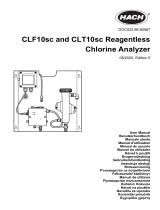 Hach CLF10sc Användarmanual
Hach CLF10sc Användarmanual
-
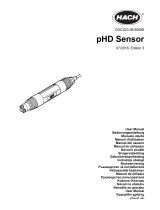 Hach pHD Sensor Användarmanual
Hach pHD Sensor Användarmanual
-
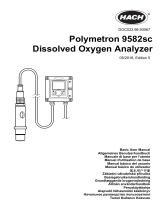 Hach Polymetron 9582sc Basic User Manual
Hach Polymetron 9582sc Basic User Manual
-
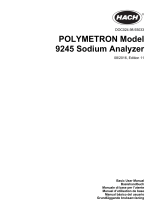 Hach POLYMETRON 9245 Basic User Manual
Hach POLYMETRON 9245 Basic User Manual
-
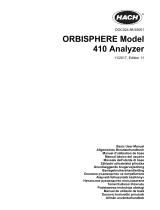 Hach ORBISPHERE 410 Basic User Manual
Hach ORBISPHERE 410 Basic User Manual
-
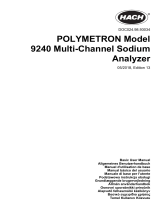 Hach polymetron 9240 Basic User Manual
Hach polymetron 9240 Basic User Manual
-
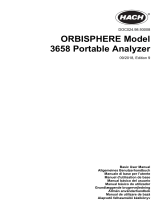 Hach ORBISPHERE 3658 Basic User Manual
Hach ORBISPHERE 3658 Basic User Manual
-
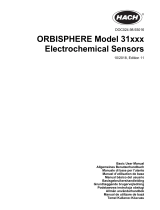 Hach ORBISPHERE 31 series Basic User Manual
Hach ORBISPHERE 31 series Basic User Manual
-
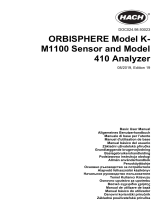 Hach ORBISPHERE K-M1100 Basic User Manual
Hach ORBISPHERE K-M1100 Basic User Manual
Andra dokument
-
Facom CL2.P1913 Bruksanvisning
-
Laserliner CoatingTest-Master Bruksanvisningar
-
Pahlen Autodos M1-M2-M3 Bruksanvisning
-
Gorenje BO73ORA Användarmanual
-
wtw pH 3110 Snabbstartsguide
-
Pahlen MA70-04 Bruksanvisning
-
Pahlen Pool tester Autocheck 15 Bruksanvisning
-
Lindab LCC-P Användarmanual
-
Pahlen MA70-02 Bruksanvisning
-
Pahlen 212994 Bruksanvisning


































































































































































































































































































































































































































































